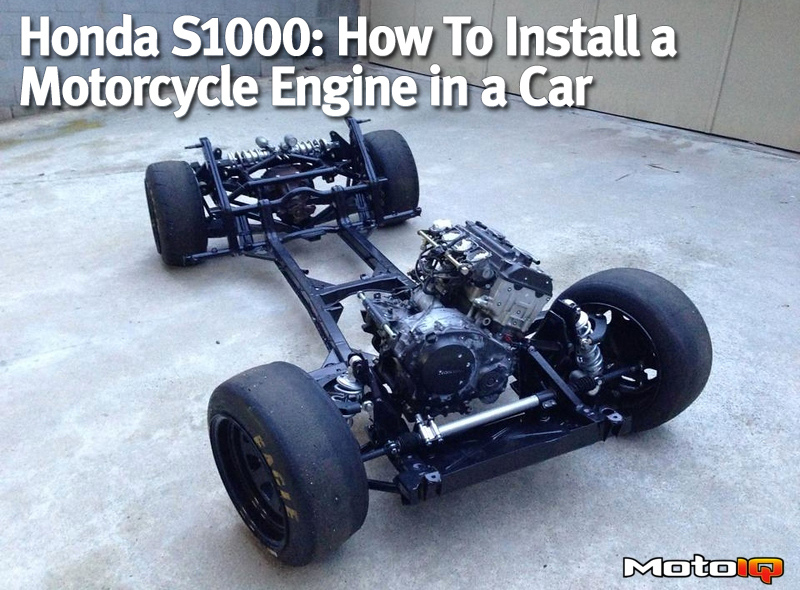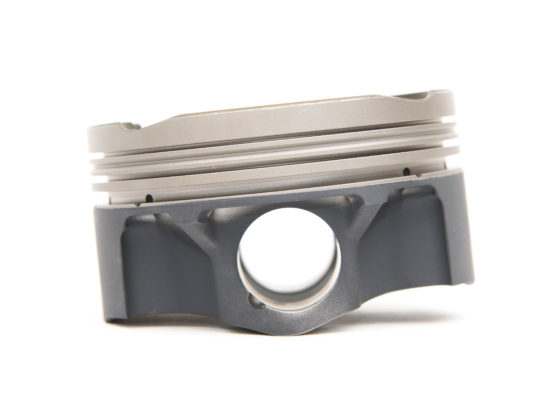,
Also, while we’re at it, upgrade the brakes, probably
Brakes are one of those things that are easy to forget. When Dodge made the Viper, they put a stupidly large engine in a car with brakes carried over from a Plymouth Laser, which supports my theory that the first generation Viper was engineered entirely by a team of clinically insane 12 year olds.
As mentioned earlier, this project used stock Miata brakes, which seem small but are much more than capable on a car that weighs 1400 pounds. Since Miata uprights were used, the brakes installation was trivial, requiring only mounting the Miata master cylinder and running new lines to all the corners. Also added was an adjustable proportioning valve because the stock Mazda one is probably not adjusted for this entirely different setup.
Supercharger
Okay, that’s it! Engine installed, plumbed, wired, attached to the wheels, and ready to go. One last step after you get it all running is to supercharge it:

Hah! But seriously, don’t do this; shoving a high voltage line into your gas cap is frowned upon by the Tesla staff.
This is but one of many ways to get a motorcycle engine powered car. There are hundreds of build threads, pictures, and explanations of different bike engine cars floating around the internet, and many of them have different solutions than were chosen for this project. I’m a total cheap-ass, and a bit unconventional, so a lot of the designs here were informed with that attitude on things. You may have different opinions. The Formula SAE and Formula student websites and forums have a ton of information on the more technical side of things. The Locost forums (US and UK) have a lot of bike engine builds and are pretty good places to find out how people have chosen to solve different problems, and actually a great place to get all sorts of ideas for putting a motorcycle engine in a car.
Just remember that this is the internet and that some of these ideas are bad.
Possible other steps: Shorten the engine oil pan and pickup
This actually needs to happen first if required. A lot of motorcycle engines have a deep oil sump which will require you to mount the engine much higher than it really needs to be. If you’re not too concerned about getting the center of mass low, and you have the space, you don’t really need to do this. Without this mod, the engine was too tall to fit under the hood, even without the gargantuan intake, so it had to be done.
You can solve this problem and any possible future oil starvation problems by just buying and installing a dry sump. There are companies that make some bolt on dry sumps for a few motorcycles, the Hayabusa seemingly being the most popular. Actually, it should be noted that the Hayabusa seems to have the best aftermarket for this sort of project, so if you are the type of person to buy kits to help simplify the project (nothing wrong with that) then you’ll probably be best served using a ‘Busa.
Anyway, as mentioned earlier, I am cheap, so I just cut the pan. It is one of those things best done with hand tools and patience; a hacksaw and a sharpie will get it done just fine if you don’t rush. Inside the engine under the pan is the oil pickup, which you’ll need to also shorten by the exact same distance that you shorten the pan. You might also have to weld in small standoffs to keep the pickup off the bottom of the pan. Basically just mimic the inside bottom of the stock oil pan. I also added a baffle, just a flat piece of aluminum between the pan and the block to prevent too much oil slosh; since motorcycles lean and cars do not, the oil pickup was not designed with lateral g forces and you’ll have to make some effort to mitigate that. I don’t datalog oil pressure like I should but have not noticed any oil lights or starvation issues with this setup.


I ordered a small sheet of magnesium, cut it to size and cut off some small strips to use as weld filler. I brought it into work during the day and some of the fabricators and I took turns welding it up with a class D fire extinguisher on hand. It welds pretty easily, like aluminum but it pools better. Nothing caught fire.
So yeah, you just read an entire article of advice from a guy who tried to weld an aluminum plate to a magnesium pan.
Good Luck!
FAQ:
This seems like a lot of stress on the transmission. Will my transmission explode after 15,000 miles?
Probably? But unless you’re daily commuting, that will be several years from now and will be the perfect time to refresh with a new engine and transmission. An exploding transmission is your car’s way of telling you it wants a newer, bigger motorcycle engine and transmission.
Is this legal?
This was done with a 1964 which is pre-emissions and doesn’t require an inspection here (California). All the emissions equipment from the bike was retained, so it might be legal for non-exempt vehicles, though the engine is from a different type of vehicle, so…? I don’t know, I’m not a lawyer. Just don’t get pulled over.
How much does this cost to do?
I hate keeping track of that type of things, so it’s hard to say exactly, but the entire project (car, engine, parts, everything) was somewhere south of $10k. I fabricated pretty much everything and cheaped out on everything else. You could easily spend five times that much if you bought the expensive differential and custom fabrication. Also, there was no paint or bodywork, which saved a lot of money and work that I hate doing.
What do you do about reverse?
Get out and push. This is, of course, the easiest solution and also a really bad one. You could use a Goldwing engine that has electric reverse built in, or buy an inline custom reverse box (bring money). A common low-cost solution is to use an engine starter motor and have it engage a sprocket that is attached to the drivetrain somewhere (usually on the diff.) Getting out to push turns out to be a pretty terrible solution, which is why the S600 is getting an upgrade which will be discussed in detail in a future writing!




12 comments
Hi…This article is probable the most interesting thing a have read in a very very long time. I have done a few building projects and something like this one you have done really interest me. I will do more research and get things going. Thanks for sharing your project….
Thanks for the support!
Do you have any videos of this running?
What do you think of mounting an R1 engine trans and rear wheel with swing arm behind the passenger seat in a 1st generation Insight. Bike tank up front. Other than a side scoop and engine mounts, drive line modification was a 66 tooth rear sprocket instead of 44. Running weight is 1420#, 150 hp, 95 mph top speed at 12k and 12.8 quarter mile at 95. $1200 total spent. 350 car. 450 bike, 85 battery, 80 car tire on bike rim. Hoses, cable, extending length of dash wiring, exhaust extension pipe, etc. super easy build. Took as long to strip original car of interior and driveline.
I’ve been searching for a simple way to install a bike engine directly to the front wheel drive of my Honda Insight but like your idea. Would like to know more.
Hey I’m building a 07 cbr1000 crosskart and I was wondering how did you do the throttle system
What’s the acceleration from 0-60 like?
You mentioned possibly using a Goldwing as a donor because it offers a built in reverse. Honda bikes with drive shafts rotate the final drive in the opposite direction of conventional automotive drivetrains. You could end up with 5 speeds reverse and one forward.
Full disclosure, I walked into this trap with my Locost, I “solved”it by flipping my differential over. I am running 150 hp through a differential designed for 80 hp, backwards. This was humbling, please don’t laugh.
DUDE, Thanks for the insanity!!!!
How do you set up the gear linkage when the bike motor is mounted transversely? There’s a 90° turn to deal with. Is it best to use two pull cables?
i am currently doing a similar project for my university degree which i need to design and make a shifter and for a race car with a motorbike engine in it (GSXR 1000) and was wondering if anyone had a idea of what would be the easiest and quickest way of going about it. if anyone was any suggestions please share as with the time i have to complete this is very short and help would be appreciated thank you
If you have to ask this question you probably should not do this sort of project to earn your degree. It is a very general question that is impossible to answer without writing a book.